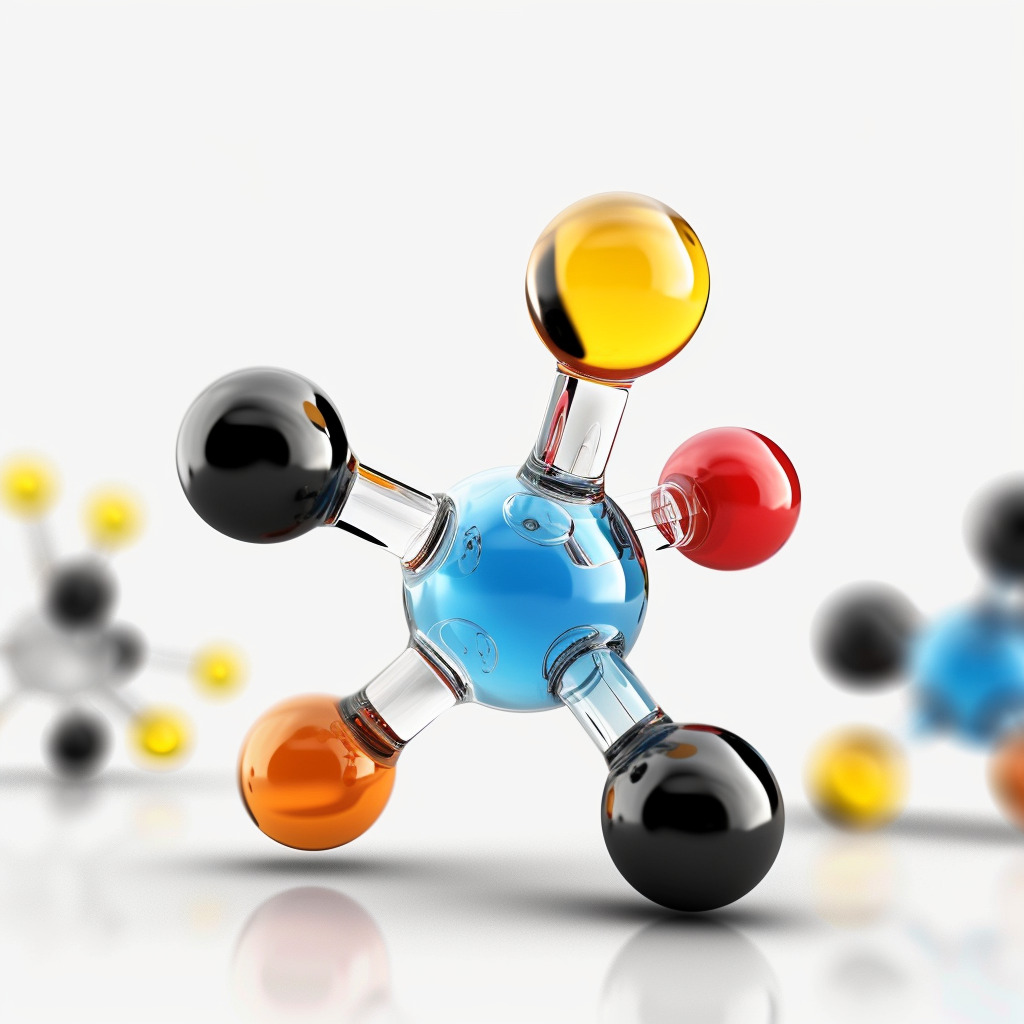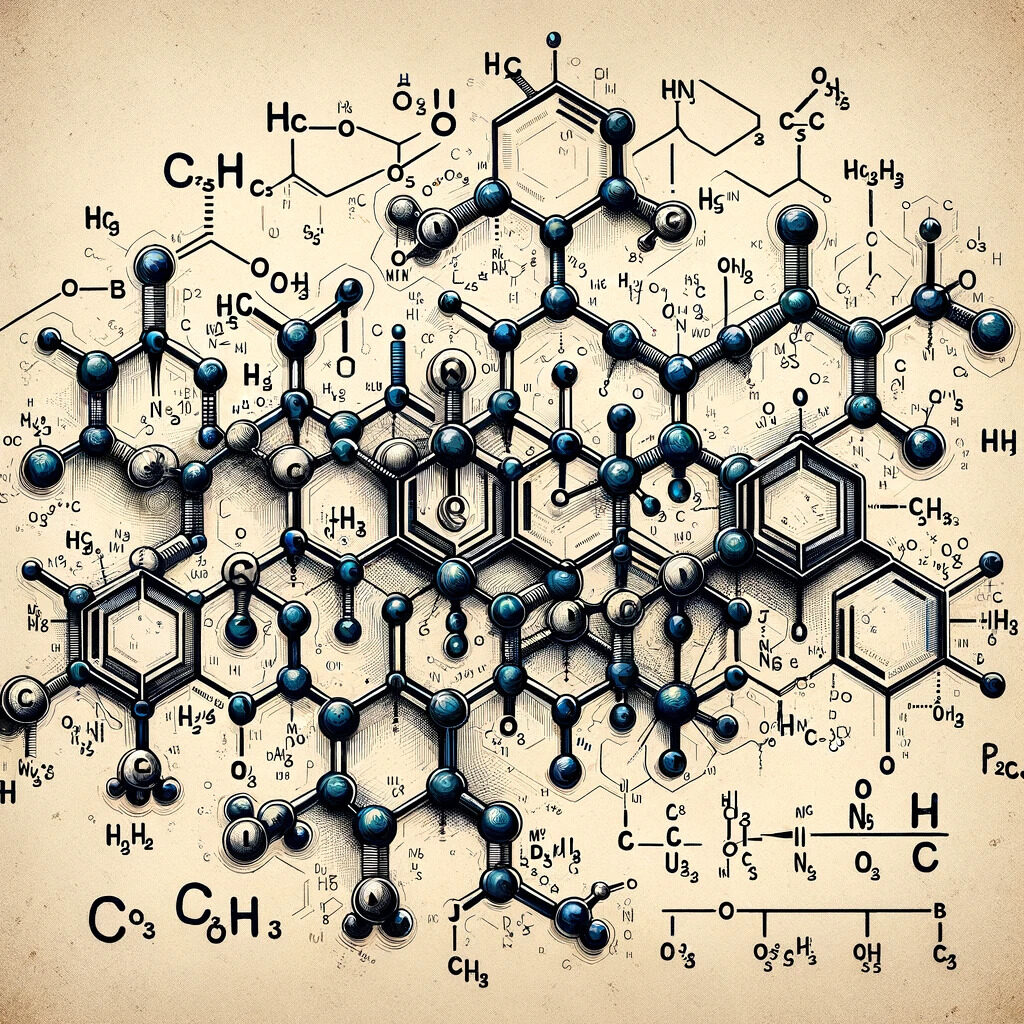
Everything around us, the air we breathe and the food we eat, is made of chemical compounds. But what exactly is a chemical compound, and how do we represent them with formulas?
With this article, we will thoroughly explain these questions. It’s great for anyone who wants to understand the basics of chemical compounds and why they matter in chemistry. We’ll cover how compounds are formed, different types of compounds, and how to figure out chemical formulas.
A Chemical Compound And How To Figure Out Chemical Formulas: Key Takeaways
In a hurry? Don’t worry. Our critical takeaways on chemical compounds and formulas will give you a quick and easy summary of the main points:
🟠 Chemical Compounds: Substances formed from chemically bonded elements, like water (H₂O), essential in chemistry.
🟠 Chemical Formulas: Representations showing the types and amounts of atoms in compounds, crucial for understanding their composition and reactions.
🟠 Organic Compounds: Carbon-containing substances, such as glucose (C₆H₁₂O₆), fundamental in various biological and industrial processes.
If you find that how to figure out a chemical formula is challenging, don’t worry! Personalized tutoring or interactive chemistry lessons make these concepts more straightforward. Explore more chemistry topics and broaden your knowledge with our free World of Chemistry blogs.
What is a Chemical Compound, and How is it Different from a Mixture?
A chemical compound is a distinct substance formed when two or more elements chemically combine in a fixed ratio. Unlike a mixture, where the individual components retain their properties, a compound often exhibits new characteristics. For instance, water (H₂O) is a compound formed from hydrogen and oxygen, whose properties differ entirely from the two gases.
How to Name Chemical Compounds Using the IUPAC System
Naming chemical compounds involves a systematic approach provided by the International Union of Pure and Applied Chemistry (IUPAC). This system uses the types and numbers of atoms in a compound to determine its name. For example, methane, a simple compound of carbon and hydrogen, is chemically represented as CH₄, indicating one carbon atom and four hydrogen atoms.
Examples of Chemical Compounds and Their Formulas, Properties, and Uses
- Water (H₂O): Vital for life, solvent in chemistry.
- Carbon Dioxide (CO₂): Produced in respiration, used in carbonated drinks.
- Sodium Chloride (NaCl): Known as table salt, essential for human health.
- Sucrose (C₁₂H₂₂O₁₁): Common sugar, energy source.
- Calcium Carbonate (CaCO₃): Found in rocks, used in antacids.
- Acetic Acid (CH₃COOH): The main ingredient in vinegar, used in food preservation.
- Ammonia (NH₃): Used in fertilizers, necessary for plant growth.
- Ethanol (C₂H₆O): Alcohol in beverages, used as a solvent.
- Nitric Acid (HNO₃): Used in fertilizers and explosives.
- Methane (CH₄): A major component of natural gas used for heating.
All you need to know about vitamins and minerals.
Types of Special Compounds: Coordination Compounds
Coordination compounds involve a central metal atom bonded to surrounding molecules or ions. An example is hemoglobin in the blood, which contains an iron atom coordinated with four nitrogen atoms within the structure.
Types of Special Compounds: Nitride Compounds
Nitride compounds are formed when nitrogen combines with metals. For instance, boron nitride (BN) is a compound with properties similar to diamonds, making it valuable in industrial applications for its hardness and thermal stability.
Are you finding chemical compounds tricky? A chemistry tutor can provide personalized lessons tailored to your needs, making organic and inorganic chemistry understandable and enjoyable.
Chemical Formulas and Their Types
Chemical formulas are like shorthand in chemistry. They tell us what’s in a substance and in what amounts. For example, CO₂ in a soda can tell you there’s carbon dioxide, which gives the fizz. These formulas are vital to understanding everything from the air we breathe (O₂ for oxygen) to the water we drink (H₂O).
What is a Chemical Formula, and What Information Does it Convey?
A chemical formula represents the types and numbers of atoms in a compound. Take water (H₂O) for example. This formula tells us that each water molecule has two hydrogen atoms and one oxygen atom bonded together. These formulas are crucial as they give us a glimpse into the compound’s structure, the ratio of its elements, and how substances will interact in chemical reactions.
How to Write Chemical Formulas for Elements, Ions, and Compounds
When writing chemical formulas, the first step is to familiarize yourself with the symbols for elements. These symbols are shorthand for the elements; for instance, ‘C’ stands for carbon, and ‘H’ represents hydrogen. When elements form simple molecules like oxygen gas, their formulas reflect how many atoms are bonded together. So, the formula for oxygen gas is O₂, showing that two oxygen atoms are linked.
In the case of ions, which are atoms or groups of atoms carrying an electric charge, their formulas also include a notation for the charge. For example, we write a calcium ion with a positive two charge as Ca²⁺.
When elements or ions combine to form compounds, the chemical formula represents this combination. It shows which elements are present and their ratio within the compound. A classic example is table salt, whose chemical formula is NaCl. This formula indicates that table salt consists of sodium (Na) and chlorine (Cl) in a 1:1 ratio.
The Difference Between Empirical, Molecular, and Structural Formulas
There are different types of chemical formulas:
- Empirical formulas show the simplest ratio of elements. Hydrogen peroxide’s empirical formula is HO, indicating a 1:1 hydrogen and oxygen ratio.
- Molecular formulas reveal the exact number of atoms. For hydrogen peroxide, this is H₂O₂.
- Structural formulas provide a detailed view of how atoms are arranged and connected, like showing the double bond in oxygen gas (O=O).
Example: Compound of Element with Oxygen
Carbon dioxide (CO₂) is a common compound with oxygen. Its formula indicates one carbon atom joined to two oxygen atoms. This gas is crucial in photosynthesis and impacts climate change as a greenhouse gas. Moving forward, we’ll delve into the practical application of these formulas in chemical calculations.
Anyone curious about chemistry in daily life can explore simple experiments or consult a chemistry tutor to discover more about the science behind these everyday phenomena.
Chemical Formulas and Their Calculations
Calculating chemical formulas is a fundamental skill in chemistry. It allows us to quantify the exact composition of compounds and understand the specifics of chemical reactions. Whether you’re determining the amount of a reactant needed for an experiment or analyzing the products of a reaction, these calculations are essential.
How to Figure Out Chemical Formulas from the Composition of a Compound
To determine a compound’s chemical formula from its composition, you need to know the mass percentage of each element present. For instance, water is made up of hydrogen and oxygen. By learning the mass of each element in a water sample, you can calculate the ratio of hydrogen to oxygen atoms. We then use this ratio to write the chemical formula. This ratio is always 2:1 for water, leading to the formula H₂O.
How to Calculate the Molar Mass and Percent Composition of a Compound
We calculate the molar mass of a compound by adding up the atomic masses of all the atoms in its formula. For example, the molar mass of water (H₂O) is approximately 18 g/mol, derived from the sum of the atomic masses of two hydrogen atoms (1 g/mol each) and one oxygen atom (16 g/mol). The percent composition is determined by dividing the mass of each element in one mole of the compound by the total molar mass of the compound, then multiplying by 100.
How to Use Chemical Formulas to Determine the Mole Ratio and Stoichiometry of a Reaction
We find the mole ratio in a chemical reaction using the coefficients in the balanced chemical equation. This ratio tells you how many moles of each reactant and product are involved in the reaction. This ratio is crucial for stoichiometry calculations to determine how much of each substance is needed or produced. For example, in the combustion of methane (CH₄), the balanced equation is CH₄ + 2O₂ → CO₂ + 2H₂O, indicating a 1:2:1:2 mole ratio among methane, oxygen, carbon dioxide, and water.
Practical Example: Calculation in a Chemical Reaction
Consider the reaction of hydrogen gas with oxygen to form water. The balanced equation is 2H₂ + O₂ → 2H₂O. If you start with 2 moles of hydrogen, the mole ratio tells us you require 1 mole of oxygen to react completely. The reaction will produce 2 moles of water.
Organic Compounds and Their Formulas
Organic chemistry is a fascinating and vital branch focused on compounds containing carbon. These compounds are everywhere – in the food we eat, the medicines we take, and even in our bodies. Understanding organic chemistry helps us comprehend how these substances function and interact.
What is Organic Chemistry, and Why is it Important?
Organic chemistry studies carbon-containing compounds, along with their structure, properties, and reactions. It’s important because carbon is the backbone of all life on Earth. The versatility of carbon allows it to form a wide variety of compounds, from simple molecules like methane (CH₄) to complex ones like DNA.
How to Identify and Classify Organic Compounds Based on Their Functional Groups
Organic compounds are classified based on their functional groups, which are specific groups of atoms within molecules that determine their chemical reactions. Typical functional groups include alcohols (–OH), carboxylic acids (–COOH), and ketones (C=O). For example, alcohols generally have a hydroxyl group (–OH) attached to a carbon atom.
How to Write and Interpret the Condensed Structural Formulas of Organic Compounds
Condensed structural formulass are a simplified way to represent the arrangement of atoms in organic compounds. They show the order in which atoms are bonded but omit the individual bonds. For instance, ethanol can be written as CH₃CH₂OH, indicating a chain of two carbon atoms with the associated hydrogens and a hydroxyl group at the end.
Example: A Common Organic Compound
A typical example of an organic compound is glucose, with the formula C₆H₁₂O₆. This sugar is a primary energy source for living organisms. In its condensed structural formula, glucose is represented as CH₂OH(CHOH)₄CHO, showing a chain of carbon atoms with hydroxyl groups and a carbonyl group.
Do you need help figuring out chemical formulas? An organic chemistry tutor or hands-on organic chemistry lessons can make a big difference in turning these complex ideas into something you can easily understand and use.
How to Figure Out Chemical Formulas
So, we’ve journeyed through the world of chemical compounds and formulas. It’s quite a lot to take in, right? From naming compounds with the IUPAC system to diving into organic chemistry and biochemistry, we’ve covered the essentials that make up our world at a molecular level. Remember, this is just the start, and there’s so much more to discover in chemistry!
Suppose you’re on the lookout for a chemistry tutor. In that case, a simple search like “inorganic chemistry tutor Liverpool” or “organic chemistry teacher Edinburgh” on platforms like meet’n’learn can help you find the right private teacher for your needs.
Those who prefer group learning environments can easily find chemistry classes nearby by searching for “chemistry classes Leeds” or “chemistry lessons London” online, leading to local schools or educational centers.
A Chemical Compound And How To Figure Out Chemical Formulas: Frequently Asked Questions
1. What is a Chemical Compound?
A chemical compound is made from two or more elements chemically bonded together.
2. What is an Example of a Compound of Alcohol with Metal?
An example is potassium ethoxide, formed when ethanol reacts with potassium.
3. What Information Does a Chemical Formula Indicates?
A chemical formula indicates the types and numbers of atoms in a compound.
4. What is the Difference Between a Chemical Compound and a Mixture?
A chemical compound is made of elements chemically bonded in fixed ratios, unlike a mixture where the substances retain their individual properties.
5. What is a Compound of Element with Oxygen?
An example is water (H₂O), where hydrogen and oxygen are chemically bonded.
6. What is the Chemical Formula for Alcohol?
The formula for ethanol, a common alcohol, is C₂H₅OH.
7. Can You Give Examples of Chemical Compounds?
Examples include water (H₂O), carbon dioxide (CO₂), and sodium chloride (NaCl).
8. What is a Compound of Nitrogen with Metals?
An example is aluminum nitride (AlN), which we use in electronics for its high thermal conductivity.
Read all about the electronic configuration of an atom.
References:
1. LibreTexts Chemistry
2. Britannica
3. Wikipedia



